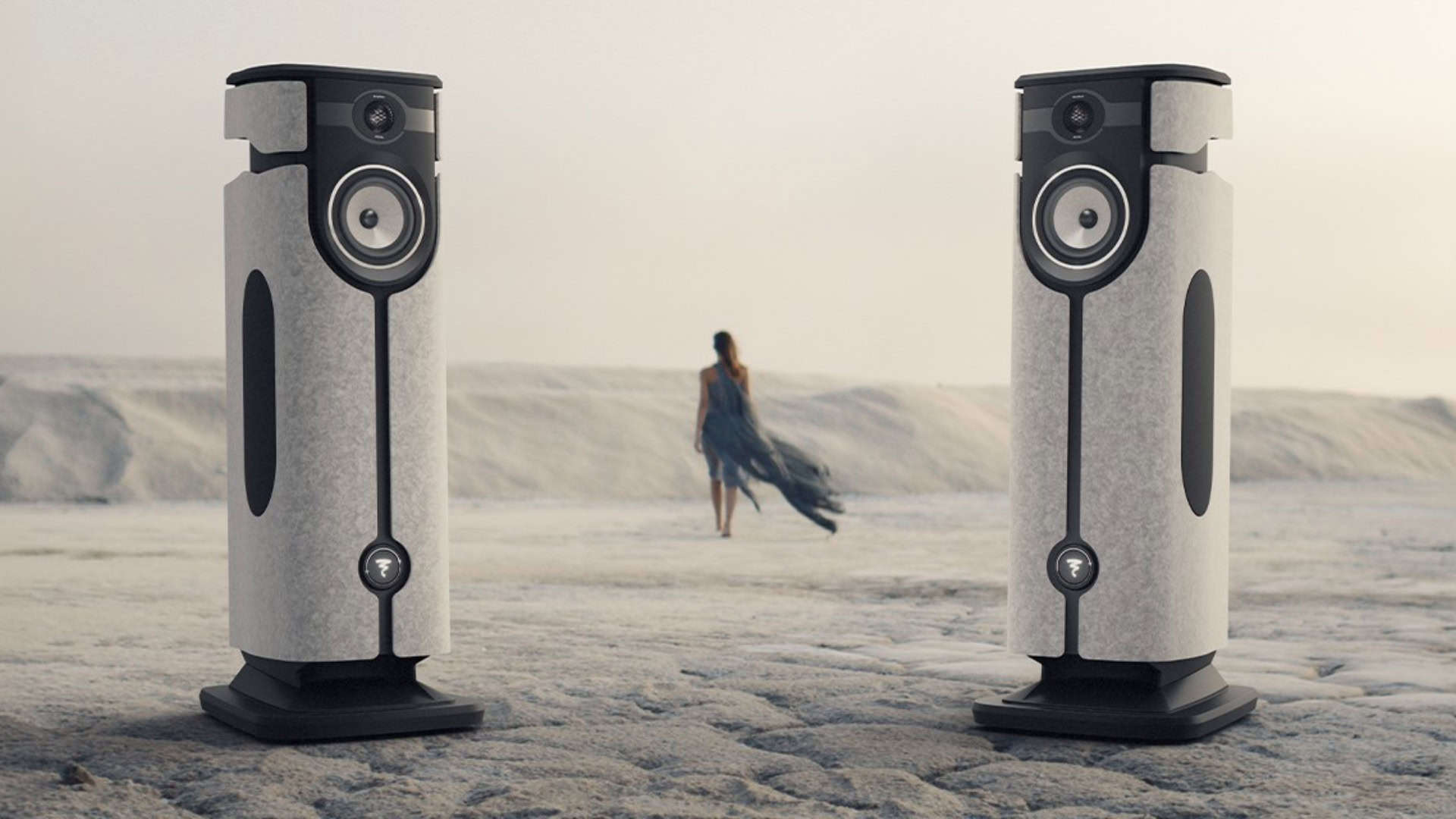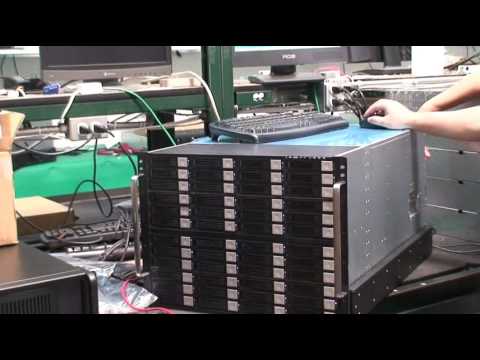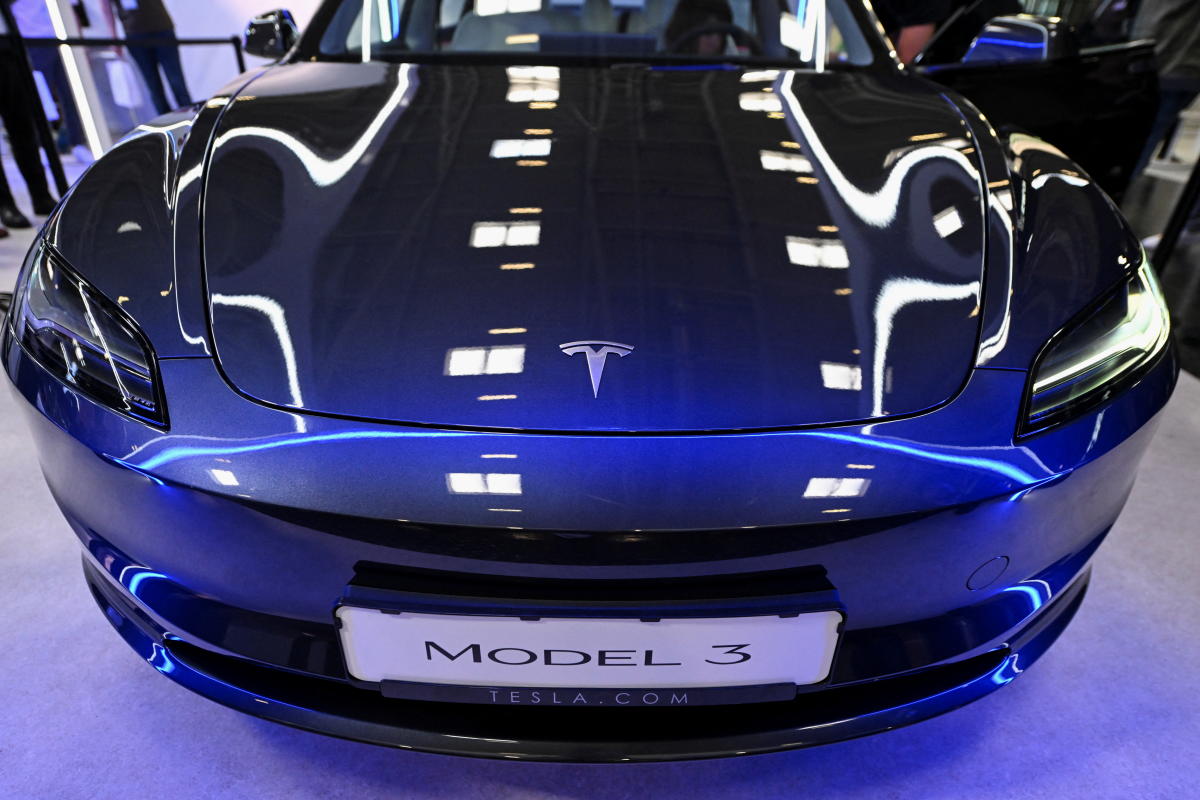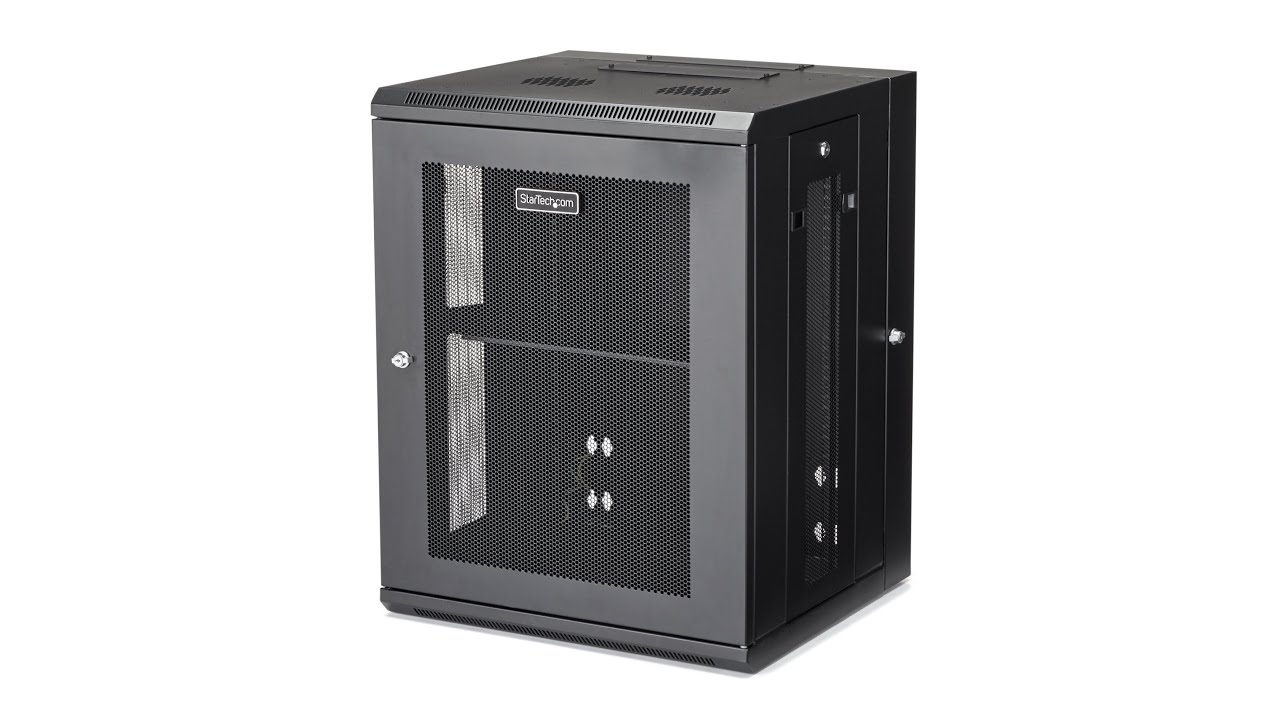Technology
The DIVA UTOPIA is the loudspeaker you’ve only dreamt of

It’s not often that style, luxury, and top-tier quality all meet at a certain point, but when they do, you get this beauty of a loudspeaker. Focal, one of the top audio brands in France, just unveiled the new DIVA UTOPIA. This is a floorstanding loudspeaker that’s designed to give you the best audio experience that money can buy.
The DIVA UTOPIA combines high-quality equipment, amazing audio, excellent convenience, and an eye-popping design. Coming in at $39,000 for a pair of speakers, these aren’t your typical store-shelf speakers. They’re for people who want the very best from their speakers. As steep as the price is, it’s more than justified for the sheer experience you’re getting for it. So, let’s dive into what makes the DIVA UTOPIA the one to have.
Focal announces the DIVA UTOPIA with high-quality drivers
Saying that this speaker is high-quality is an understatement. Focal has nearly 50 years of audio expertise under its belt, so the company has its own unique sound and technology. The DIVA UTOPIA is an active bass-reflex speaker. It uses the company’s patented ‘W’ membrane for its drivers to drive rich and engaging audio through your home.
This special membrane consists of two cones of glass that sandwich the central foam body. This unique technology allows the engineers to master the lightness, rigidity, and damping of the loudspeaker. The end result is a much more refined sound with reduced distortion and a better frequency curve.
The sound doesn’t only come from one driver, as the main drivers are accompanied by a beryllium ‘M’-profile tweeter that produces the higher tones. This combination creates a well-balanced and engrossing sound. The lower tones, mid-tones, and higher tones will have special attention paid to them.
All of the drivers use TMD suspension. This is a part that stabilizes the diaphragm to reduce vibrations. The TMD (Tuned Mass Damper) technology stabilizes the diaphragm for better sonic neutrality. It also enhances the midrange performance of the audio.
The cherry on top of this acoustic cake is the Infinite Acoustic Loading technology. This controls the acoustic pressure behind the dome of the tweeter. It minimizes the internal resonances, thus ensuring minimal distortion and a pure sound.
All in all, there’s a tweeter, a mid-bass driver, and four side-mounted woofers. The drivers all come with Niam amplification. All of these elements come together to create a magnificent listening experience that you can only get from a Focal product.
We can’t ignore the aesthetics of this speaker
The DIVA UTOPIA is a beautiful device. It has a unique design that goes along with Focal’s design mentality. It has a sleek gray aesthetic that’s as elegant as it is professional. The design is eclectic with a balance of curves and straight lines throughout. The tweeter and main driver sit at the top of the body right above a split that goes down the speaker. Also, the bass speakers sit on the sides of the body.
This all creates a visually appealing design that will fit in with your decor.
Ease of connectivity
Much of the time, the more pricey a device is, the more complicated it is to set up. However, that’s not the case for the DIVA UTOPIA. Focal created this speaker for a no-sweat experience.
Firstly, you don’t need any additional hardware like an amp or DAC to listen to music. In fact, you also don’t need wires to connect the pair of speakers to one another. The DIVA UTOPIA uses UWB (Ultra Wideband) technology to connect the speakers. This is convenient, as you don’t have to worry about the hassle of running wires throughout your room to connect the speakers. All you have to do is plug them in, pair them, and enjoy your music.
Exceptional audio quality
The audiophiles among you might have your doubts about the audio quality since it’s being streamed wirelessly. However, you don’t need to worry. While wireless playback has gotten some flack over the years, the audio coming from the DIVA UTOPIA blows past CD quality and gives you rich studio-quality audio.
The ultra-wideband connectivity allows for some insanely detailed music. You’re able to stream audio at up to 32-bit/348kHz. To put that into perspective, Tidal, one of the most popular hi-fi music streaming services, maxes out at 24-bit/192kHz.
Speaking of Tidal, this is one of the streaming services that you can connect to directly for seamless listening. Along with that, you can also connect to Spotify, Qobuz, and QQ Music (for Chinese listeners).
If you want to connect a device like your phone or tablet to the speakers, the DIVA UTOPIA supports Google Cast, Apple Airplay, UPnP, and good old Bluetooth. Along with those, there are also several wired input methods. You have HDMI eARC, optical, RCA, and USB. This means that you can connect the speakers to your existing audio setup depending on what sort of equipment you have. Also, if you want to connect the speakers to your TV or turntable, you can do so. Rather than setting up an entire surround sound setup, you can use a pair of these speakers and you’ll be more than fine.
Not for everyone, but everyone will love it
The DIVA UTOPIA represents the very best that Focal can bring to the market. It’s the culmination of decades of refinements and innovation. At $40K, this won’t be for everyone. However, everyone who buys it will be thoroughly impressed with it. This is a top-tier speaker for those looking for a top-tier experience.
For more information like where to buy this speaker, click on the link below.
More info on the DIVA UTOPIA
Specifications
- Type: 3-way bass-reflex active
- Speaker drivers: Floorstanding bass: 4 x ‘W’ 61/2″ (16.5cm) push-push configuration
Midrange-bass: ‘W’ 61/2″ (16.5cm) with TMD surround and NIC motor
Tweeter: IAL2 15/8″ (27mm) pure beryllium ‘M’-shaped inverted dome - Bandwidth: (+/-3dB) 27Hz-40kHz
- Low-frequency cut-off (-6dB): 24Hz
- Maximum volume (per pair): 116dB SPL (@ 1m)
Amplification power per loudspeaker
LF: 250W Class AB
MF: 75W Class AB
HF: 75W Class AB - Power supply: 110-120V/220-240V ~50/60Hz
Power consumption:
Usage type: 280W
Network standby mode: <2W
No-network standby mode: <0.5W - Inputs:
Primary loudspeaker:
– HDMI eARC, CEC
– TOSLINK Optical
– RCA analogue
– Type A USB 2.0
– RJ45 Ethernet
– RJ45 Speaker Link
Secondary loudspeaker:
– RJ45 Speaker Link - Internet radio format: Windows Media-formatted content, MP3, ACC, Ogg Vorbis streams and MMS
- Internet Radio: Internet Radio
- Audio format:
– WAV, FLAC and AIFF – up to 24bits/384kHz
– ALAC (Apple Lossless Audio Codec) – up to 24bits/384kHz
– MP3 – up to 48kHz/ 320kbits (16bits)
– AAC – up to 48kHz/320kbits (16bits)
– OGG and AAC – up to 48kHz (16bits)
– DSD64 and DSD128
– Bluetooth® – aptX™ Adaptive, SBC, AAC
– Note: handles smooth, continuous playback on all formats - Multiroom: Sync up to 32 Focal & Naim streaming devices
and control them from the Focal & Naim app - Wireless streaming feature:
– AirPlay 2
– Google Cast
– UPnP™
– Bluetooth® 5.3
– Spotify via Spotify Connect
– TIDAL via TIDAL Connect
– QQ Music via QPlay - Music streaming services:
via the Focal & Naim app
– TIDAL
– Qobuz
– QPlay
– Internet radio
– Podcasts depend on services available in each country - Network: Ethernet (1000/100/10Mbps), Wi-Fi (Wi-Fi 6)
- Wireless connection: UWB 96kHz/24bits
Connection with Hi-Res Link 192kHz/24bits - Handheld: Integrated remote control
Focal & Naim control app for iOS and Android - Remote control: Zigbee
- Dimensions (HxLxD): 475/8×161/2×22″ (121x42x56cm)
- Packaging dimensions (HxWxD): 54×201/2×291/2 (137x52x75cm)
- Net weight: 141lbs (64kg)
- Weight (with packaging): 174lbs (79kg)
Servers computers
5.3 GB / Second Write Speed – 96TB – 8U Storage Server – RackMountPro.com – Extreme Transfer !

5.3 GB / Second Write Speed – 96TB – 8U Storage Server – – RackMountPro.com – Extreme Transfer Speed ! .
source
Technology
Tesla has stopped selling its cheapest car

Tesla’s least expensive car is off the market: the Model 3 Standard Range Rear-Wheel Drive is no longer available in the online configurator. first reported on the absence of that Model 3 build. It was the cheapest option from the electric vehicle brand with a price tag of $39,000. Now the takes that title with a retail price of $42,500. Tesla unveiled a to its Model 3 line in the US in January.
The company also posted for the third quarter today, with 462,890 vehicles delivered between July and September. Sales were aided by price cuts and other incentives during the quarter, enough to reach a 6.4 percent increase from the previous year’s deliveries. However, the figure fell short of analysts’ predictions for more than 469,000 deliveries during the period. This quarterly result could also hamper CEO Elon Musk’s projections for the company to surpass the 1.8 million vehicles it handed over in all of 2023.
Tesla has also been struggling with recalls this year. Most of those issues were fixed with over-the-air updates, but the scope and number of the issues may also be leaving customers with doubts. Recalls impacted vehicles in January, in February, in May, in June, in July, and more than in August.
Servers computers
15U Wall-Mount Server Rack Cabinet – RK1520WALHM | StarTech.com

This 15U server or network rack cabinet lets you mount your EIA-310 compliant equipment to the wall, in a secure enclosure that has a hinged rear door for easy access to your equipment. The enclosure features adjustable mounting depth from 2 to 16 in. to provide a robust storage solution for your rack-mount equipment.
To provide secure stability for your heaviest equipment, this rack offers 4-post mounting, supporting a higher weight capacity per U than 2-post racks and supporting a total load capacity of up to 200 lbs. (90 kg).
To learn more visit StarTech.com
source
Technology
Google Cloud brings tech behind Search and YouTube to enterprise gen AI apps

Join our daily and weekly newsletters for the latest updates and exclusive content on industry-leading AI coverage. Learn More
As the generative AI continues to progress, having a simple chatbot may no longer be enough for many enterprises.
Cloud hyperscalers are racing to build up their databases and tools to help enterprises deploy operational data quickly and efficiently, letting them build applications that are both intelligent and contextually aware.
Case in point: Google Cloud’s recent barrage of updates for multiple database offerings, starting with AlloyDB.
According to a blog post from the company, the fully managed PostgreSQL-compatible database now supports ScaNN (scalable nearest neighbor) vector index in general availability. The technology powers its Search and YouTube services and paves the way for faster index creation and vector queries while consuming far less memory.
In addition, the company also announced a partnership with Aiven for the managed deployment of AlloyDB as well as updates for Memorystore for Valkey and Firebase.
Understanding the value of ScaNN for AlloyDB
Vector databases are critical to power advanced AI workloads, right from RAG chatbots to recommender systems.
At the heart of these systems sit key capabilities like storing and managing vector embeddings (numerical representation of data) and conducting similarity searches needed for the targeted applications.
As most developers in the world prefer PostgreSQL as the go-to operational database, its extension for vector search, pgvector, has become highly popular. Google Cloud already supports it on AlloyDB for PostgreSQL, with a state-of-the-art graph-based algorithm called Hierarchical Navigable Small World (HNSW) handling vector jobs.
However, on occasions where the vector workload is too large, the performance of the algorithm may decline, leading to application latencies and high memory usage.
To address this, Google Cloud is making ScaNN vector index in AlloyDB generally available. This new index uses the same technology that powers Google Search and YouTube to deliver up to four times faster vector queries and up to eight-fold faster index build times, with a 3-4x smaller memory footprint than the HNSW index in standard PostgreSQL.
“The ScaNN index is the first PostgreSQL-compatible index that can scale to support more than one billion vectors while maintaining state-of-the-art query performance — enabling high-performance workloads for every enterprise,” Andi Gutmans, the GM and VP of engineering for Databases at Google Cloud, wrote in a blog post.
Gutmans also announced a partnership with Aiven to make AlloyDB Omni, the downloadable edition of AlloyDB, available as a managed service that runs anywhere, including on-premises or on the cloud.
“You can now run transactional, analytical, and vector workloads across clouds on a single platform, and easily get started building gen AI applications, also on any cloud. This is the first partnership that adds an administration and management layer for AlloyDB Omni,” he added.
What’s new in Memorystore for Valkey and Firebase?
In addition to AlloyDB, Google Cloud announced enhancements for Memorystore for Valkey, the fully managed cluster for the Valkey in-memory database, and the Firebase application development platform.
For the Valkey offering, the company said it is adding vector search capabilities. Gutmans noted that a single Memorystore for Valkey instance can now perform similarity search at single-digit millisecond latency on over a billion vectors, with more than 99% recall.
He also added that the next version of Memorystore for Valkey, 8.0, is now in public preview with 2x faster querying speed as compared to Memorystore for Redist Cluster, a new replication scheme, networking enhancements and detailed visibility into performance and resource usage.
As for Firebase, Google Cloud is adding Data Connect, a new backend-as-a-service that will be integrated with a fully managed PostgreSQL database powered by Cloud SQL. It will go into public preview later this year.
With these developments, Google Cloud hopes developers will have a broader selection of infrastructure and database capabilities — along with powerful language models – to build intelligent applications for their organizations. It remains to be seen how these new advancements are deployed to real use cases, but the general trend indicates the volume of gen AI applications is expected to soar significantly.
Omdia estimates that the market for generative AI applications will grow from $6.2 billion in 2023 to $58.5 billion in 2028, marking a CAGR of 56%.
Source link
Technology
J.B. Hunt and UP.Labs launch venture lab to build logistics startups

Transportation and freight network giant J.B. Hunt is searching for software and digital products that will fuel its business and help it adapt to the modern world — and even dominate the industry. And it’s tapping startup incubator UP.Labs to help build them.
On Wednesday at the UP.Summit event in Bentonville, Arkansas, the two companies announced a logistics and freight venture lab that will launch up to six startups over the next three years. The first of these startups is slated to launch in 2025 and will focus on some of the biggest problems in logistics and freight.
UP.Labs isn’t structured like the many startup incubators that exist today. And while the company does operate in parallel with venture firm UP.Partners and uses some underlying concepts found in the venture capital world, it is not a traditional VC firm.
Instead, UP.Labs is a venture lab with a financial investment vehicle. The company forms agreements with major corporations to solve a problem for that company and for the wider sector. These aren’t meant to be proof-of-concept ideas. Instead, these startups are designed to operate independently and commercially.
Importantly, UP.Labs doesn’t allow the corporate partner to invest more than their pro rata in any of the financing rounds because it can make it difficult to attract talent and future investors. After three years, the corporate partner has the option to acquire the remaining shares of the startup. They will use a third-party valuation firm to determine the fair market value.
The opportunity to develop logistics startups focused on software and data is vast, UP.Labs founder and CEO John Kuolt told TechCrunch in a recent interview.
This is the third venture lab launched by UP.Labs and a major corporation since it launched in 2022. Its first partner was Porsche, which represents the automotive sector. Under that partnership, several startups have launched, including Pull Systems, which developed performance management software for EV suppliers, manufacturers, and operators. The lab also created Sensigo, a startup that is working on software to help service technicians diagnose problems in modern, software-defined vehicles in a matter of minutes, instead of days.
Last year, UP.Labs formed an aviation-focused lab with Alaska Airlines. Odysee, the first startup born out of that lab, made its public debut at the UP.Summit.
Overall, UP.Labs has launched 10 companies — including four with Porsche and two with Alaska Airlines — in the past 2.5 years, according to Kuolt.
“Startups are not new for us,” J.B. Hunt president and CEO Shelley Simpson said at the UP.Summit, noting the business has transformed from a legacy truck carrier to being one of the largest transportation logistics companies. That transformation required innovation within the company and tapping outside partners. For instance, Walmart, Tyson Foods, and J.B. Hunt partnered in 2019 with accelerator network Plug and Play to set up a logistics-focused program in Northwest Arkansas.
What’s different this time, she said on the sidelines of the UP.Summit event, is how this venture lab operates.
“We don’t think we’re the ones who can solve everything,” Simpson said. “We recognize the market is very large and we certainly think we have good, smart people, but we also know there’s really smart people out there, and anytime we can find a good partner, that’s going to be important for us.”
Servers computers
Liquid Blade: Hardcore's Liquid-Cooled Blade Servers

In 2010, Hardcore Computer adapted its liquid-cooling technology for PCs to the server environment. Liquid Blade immerses the blades in Hardcore’s Core Coolant — a clear dielectric fluid that is odorless and biodegradable. The submerged servers eliminate the need for rack-level fans, and would require only enough room air conditioning to keep staff comfortable. At the recent Data Center World expo in Orlando, Hardcore’s Craig Drugge provided us with an overview of LiquidBlade and how it works. .
source
-

 Womens Workouts1 week ago
Womens Workouts1 week ago3 Day Full Body Women’s Dumbbell Only Workout
-

 Technology2 weeks ago
Technology2 weeks agoWould-be reality TV contestants ‘not looking real’
-

 Science & Environment2 weeks ago
Science & Environment2 weeks agoHow to unsnarl a tangle of threads, according to physics
-

 Science & Environment2 weeks ago
Science & Environment2 weeks agoMaxwell’s demon charges quantum batteries inside of a quantum computer
-

 Science & Environment2 weeks ago
Science & Environment2 weeks agoHyperelastic gel is one of the stretchiest materials known to science
-

 Science & Environment2 weeks ago
Science & Environment2 weeks ago‘Running of the bulls’ festival crowds move like charged particles
-

 Science & Environment2 weeks ago
Science & Environment2 weeks agoHow to wrap your mind around the real multiverse
-

 News2 weeks ago
News2 weeks agoOur millionaire neighbour blocks us from using public footpath & screams at us in street.. it’s like living in a WARZONE – WordupNews
-

 Science & Environment2 weeks ago
Science & Environment2 weeks agoLiquid crystals could improve quantum communication devices
-

 Science & Environment2 weeks ago
Science & Environment2 weeks agoSunlight-trapping device can generate temperatures over 1000°C
-

 Science & Environment2 weeks ago
Science & Environment2 weeks agoITER: Is the world’s biggest fusion experiment dead after new delay to 2035?
-

 Science & Environment2 weeks ago
Science & Environment2 weeks agoPhysicists are grappling with their own reproducibility crisis
-

 Science & Environment2 weeks ago
Science & Environment2 weeks agoQuantum ‘supersolid’ matter stirred using magnets
-

 News2 weeks ago
News2 weeks agoYou’re a Hypocrite, And So Am I
-

 Science & Environment2 weeks ago
Science & Environment2 weeks agoWhy this is a golden age for life to thrive across the universe
-

 Science & Environment2 weeks ago
Science & Environment2 weeks agoQuantum forces used to automatically assemble tiny device
-

 Sport2 weeks ago
Sport2 weeks agoJoshua vs Dubois: Chris Eubank Jr says ‘AJ’ could beat Tyson Fury and any other heavyweight in the world
-

 Science & Environment2 weeks ago
Science & Environment2 weeks agoCaroline Ellison aims to duck prison sentence for role in FTX collapse
-

 Science & Environment2 weeks ago
Science & Environment2 weeks agoNuclear fusion experiment overcomes two key operating hurdles
-

 Science & Environment2 weeks ago
Science & Environment2 weeks agoNerve fibres in the brain could generate quantum entanglement
-

 Science & Environment2 weeks ago
Science & Environment2 weeks agoTime travel sci-fi novel is a rip-roaringly good thought experiment
-

 Science & Environment2 weeks ago
Science & Environment2 weeks agoLaser helps turn an electron into a coil of mass and charge
-

 CryptoCurrency2 weeks ago
CryptoCurrency2 weeks agoCardano founder to meet Argentina president Javier Milei
-

 News2 weeks ago
News2 weeks agoIsrael strikes Lebanese targets as Hizbollah chief warns of ‘red lines’ crossed
-

 Science & Environment1 week ago
Science & Environment1 week agoMeet the world's first female male model | 7.30
-
News2 weeks ago
the pick of new debut fiction
-

 Womens Workouts2 weeks ago
Womens Workouts2 weeks agoBest Exercises if You Want to Build a Great Physique
-

 News1 week ago
News1 week agoWhy Is Everyone Excited About These Smart Insoles?
-
Business2 weeks ago
JPMorgan in talks to take over Apple credit card from Goldman Sachs
-

 Science & Environment2 weeks ago
Science & Environment2 weeks agoA slight curve helps rocks make the biggest splash
-

 News2 weeks ago
News2 weeks ago▶️ Media Bias: How They Spin Attack on Hezbollah and Ignore the Reality
-

 Science & Environment2 weeks ago
Science & Environment2 weeks agoQuantum time travel: The experiment to ‘send a particle into the past’
-

 CryptoCurrency2 weeks ago
CryptoCurrency2 weeks agoBitcoin miners steamrolled after electricity thefts, exchange ‘closure’ scam: Asia Express
-

 CryptoCurrency2 weeks ago
CryptoCurrency2 weeks agoDZ Bank partners with Boerse Stuttgart for crypto trading
-

 Science & Environment2 weeks ago
Science & Environment2 weeks agoWhy we need to invoke philosophy to judge bizarre concepts in science
-

 CryptoCurrency2 weeks ago
CryptoCurrency2 weeks agoBitcoin bulls target $64K BTC price hurdle as US stocks eye new record
-

 CryptoCurrency2 weeks ago
CryptoCurrency2 weeks agoLow users, sex predators kill Korean metaverses, 3AC sues Terra: Asia Express
-

 CryptoCurrency2 weeks ago
CryptoCurrency2 weeks agoEthereum is a 'contrarian bet' into 2025, says Bitwise exec
-

 Womens Workouts2 weeks ago
Womens Workouts2 weeks agoEverything a Beginner Needs to Know About Squatting
-

 News1 week ago
News1 week agoFour dead & 18 injured in horror mass shooting with victims ‘caught in crossfire’ as cops hunt multiple gunmen
-

 Womens Workouts1 week ago
Womens Workouts1 week ago3 Day Full Body Toning Workout for Women
-

 Travel1 week ago
Travel1 week agoDelta signs codeshare agreement with SAS
-

 Politics1 week ago
Politics1 week agoHope, finally? Keir Starmer’s first conference in power – podcast | News
-

 Health & fitness2 weeks ago
Health & fitness2 weeks agoThe maps that could hold the secret to curing cancer
-

 CryptoCurrency2 weeks ago
CryptoCurrency2 weeks agoDorsey’s ‘marketplace of algorithms’ could fix social media… so why hasn’t it?
-

 CryptoCurrency2 weeks ago
CryptoCurrency2 weeks agoRedStone integrates first oracle price feeds on TON blockchain
-

 CryptoCurrency2 weeks ago
CryptoCurrency2 weeks agoBlockdaemon mulls 2026 IPO: Report
-

 Sport2 weeks ago
Sport2 weeks agoUFC Edmonton fight card revealed, including Brandon Moreno vs. Amir Albazi headliner
-

 CryptoCurrency2 weeks ago
CryptoCurrency2 weeks agoCoinbase’s cbBTC surges to third-largest wrapped BTC token in just one week
-

 Technology2 weeks ago
Technology2 weeks agoiPhone 15 Pro Max Camera Review: Depth and Reach
-

 News2 weeks ago
News2 weeks agoBrian Tyree Henry on voicing young Megatron, his love for villain roles
-

 Health & fitness2 weeks ago
Health & fitness2 weeks agoThe secret to a six pack – and how to keep your washboard abs in 2022
-

 CryptoCurrency2 weeks ago
CryptoCurrency2 weeks agoCrypto scammers orchestrate massive hack on X but barely made $8K
-

 Science & Environment2 weeks ago
Science & Environment2 weeks agoBeing in two places at once could make a quantum battery charge faster
-

 Science & Environment2 weeks ago
Science & Environment2 weeks agoA new kind of experiment at the Large Hadron Collider could unravel quantum reality
-

 CryptoCurrency2 weeks ago
CryptoCurrency2 weeks agoTelegram bot Banana Gun’s users drained of over $1.9M
-

 CryptoCurrency2 weeks ago
CryptoCurrency2 weeks agoVonMises bought 60 CryptoPunks in a month before the price spiked: NFT Collector
-

 Science & Environment2 weeks ago
Science & Environment2 weeks agoHow one theory ties together everything we know about the universe
-

 Science & Environment2 weeks ago
Science & Environment2 weeks agoFuture of fusion: How the UK’s JET reactor paved the way for ITER
-

 CryptoCurrency2 weeks ago
CryptoCurrency2 weeks ago‘No matter how bad it gets, there’s a lot going on with NFTs’: 24 Hours of Art, NFT Creator
-

 Science & Environment2 weeks ago
Science & Environment2 weeks agoHow do you recycle a nuclear fusion reactor? We’re about to find out
-

 CryptoCurrency2 weeks ago
CryptoCurrency2 weeks agoSEC asks court for four months to produce documents for Coinbase
-

 Science & Environment2 weeks ago
Science & Environment2 weeks agoTiny magnet could help measure gravity on the quantum scale
-
Business2 weeks ago
How Labour donor’s largesse tarnished government’s squeaky clean image
-

 News2 weeks ago
News2 weeks agoBrian Tyree Henry on voicing young Megatron, his love for villain roles
-

 Womens Workouts2 weeks ago
Womens Workouts2 weeks agoHow Heat Affects Your Body During Exercise
-

 Womens Workouts2 weeks ago
Womens Workouts2 weeks agoKeep Your Goals on Track This Season
-

 Science & Environment2 weeks ago
Science & Environment2 weeks agoCNN TÜRK – 🔴 Canlı Yayın ᴴᴰ – Canlı TV izle
-

 Technology1 week ago
Technology1 week agoRobo-tuna reveals how foldable fins help the speedy fish manoeuvre
-

 Science & Environment1 week ago
Science & Environment1 week agoX-rays reveal half-billion-year-old insect ancestor
-

 CryptoCurrency2 weeks ago
CryptoCurrency2 weeks agoLouisiana takes first crypto payment over Bitcoin Lightning
-

 CryptoCurrency2 weeks ago
CryptoCurrency2 weeks ago$12.1M fraud suspect with ‘new face’ arrested, crypto scam boiler rooms busted: Asia Express
-

 CryptoCurrency2 weeks ago
CryptoCurrency2 weeks agoDecentraland X account hacked, phishing scam targets MANA airdrop
-

 CryptoCurrency2 weeks ago
CryptoCurrency2 weeks agoBitcoin price hits $62.6K as Fed 'crisis' move sparks US stocks warning
-

 CryptoCurrency2 weeks ago
CryptoCurrency2 weeks agoCertiK Ventures discloses $45M investment plan to boost Web3
-

 CryptoCurrency2 weeks ago
CryptoCurrency2 weeks agoBeat crypto airdrop bots, Illuvium’s new features coming, PGA Tour Rise: Web3 Gamer
-

 Science & Environment2 weeks ago
Science & Environment2 weeks agoUK spurns European invitation to join ITER nuclear fusion project
-

 News2 weeks ago
News2 weeks agoChurch same-sex split affecting bishop appointments
-

 CryptoCurrency2 weeks ago
CryptoCurrency2 weeks ago‘Silly’ to shade Ethereum, the ‘Microsoft of blockchains’ — Bitwise exec
-

 CryptoCurrency2 weeks ago
CryptoCurrency2 weeks agoVitalik tells Ethereum L2s ‘Stage 1 or GTFO’ — Who makes the cut?
-

 Technology2 weeks ago
Technology2 weeks agoFivetran targets data security by adding Hybrid Deployment
-

 CryptoCurrency2 weeks ago
CryptoCurrency2 weeks agoEthereum falls to new 42-month low vs. Bitcoin — Bottom or more pain ahead?
-
Business2 weeks ago
Thames Water seeks extension on debt terms to avoid renationalisation
-
Politics2 weeks ago
‘Appalling’ rows over Sue Gray must stop, senior ministers say | Sue Gray
-

 Politics2 weeks ago
Politics2 weeks agoLabour MP urges UK government to nationalise Grangemouth refinery
-

 News2 weeks ago
News2 weeks agoBrian Tyree Henry on his love for playing villains ahead of “Transformers One” release
-
Politics2 weeks ago
UK consumer confidence falls sharply amid fears of ‘painful’ budget | Economics
-

 Womens Workouts2 weeks ago
Womens Workouts2 weeks agoWhich Squat Load Position is Right For You?
-

 News6 days ago
News6 days agoUS Newspapers Diluting Democratic Discourse with Political Bias
-

 Politics2 weeks ago
Politics2 weeks agoTrump says he will meet with Indian Prime Minister Narendra Modi next week
-

 Technology2 weeks ago
Technology2 weeks agoIs carbon capture an efficient way to tackle CO2?
-

 Technology2 weeks ago
Technology2 weeks agoCan technology fix the ‘broken’ concert ticketing system?
-

 CryptoCurrency2 weeks ago
CryptoCurrency2 weeks ago2 auditors miss $27M Penpie flaw, Pythia’s ‘claim rewards’ bug: Crypto-Sec
-

 CryptoCurrency2 weeks ago
CryptoCurrency2 weeks agoJourneys: Robby Yung on Animoca’s Web3 investments, TON and the Mocaverse
-

 CryptoCurrency2 weeks ago
CryptoCurrency2 weeks ago‘Everything feels like it’s going to shit’: Peter McCormack reveals new podcast
-

 CryptoCurrency2 weeks ago
CryptoCurrency2 weeks agoSEC sues ‘fake’ crypto exchanges in first action on pig butchering scams
-

 CryptoCurrency2 weeks ago
CryptoCurrency2 weeks agoCZ and Binance face new lawsuit, RFK Jr suspends campaign, and more: Hodler’s Digest Aug. 18 – 24
-

 Science & Environment2 weeks ago
Science & Environment2 weeks agoSingle atoms captured morphing into quantum waves in startling image
-

 Science & Environment2 weeks ago
Science & Environment2 weeks agoHow Peter Higgs revealed the forces that hold the universe together
-

 Science & Environment2 weeks ago
Science & Environment2 weeks agoA tale of two mysteries: ghostly neutrinos and the proton decay puzzle

You must be logged in to post a comment Login